While installing a toilet, every plumbing part of the toilet should be attached quite perfectly. Especially when the fact is about toilet flange, it should sit at the right height to the toilet horn or be flushed with the floor.
The major reason behind the toilet flange not flush with floor includes either the flange being too small or set too high from the surface of the finished floor. Also, a broken or cracked flange will fail to install perfectly with the floor.

No worry! Our comprehensive guide has got you covered all! Read through the well-researched methods to tackle all the above troubles with the best installation processes for the toilet flange.
Table of Contents
Should Toilet Flange Be Flush With The Floor
Yes definitely! The toilet flung should flush with the floor. A toilet flange is a type of fitting that connects the toilet to the drainpipe. Generally, it sits over the top of the finished floor which means the flanges go on top of the tile.

This is not a fact at all. Most of the time, it sets below the tiles or is flushed with the floor, all that is ok. The problem starts if the gap is too deep or the flange is too high from the surface of the finished floor, causing several drainage complications.
If it is a too large gap, there will cause poor drainage issues like leaking. On the contrary, the too-short gap will lead to a seepage problem in the surrounding area.
So it is essential to flush the toilet flange with the floor. Otherwise, you need to level up the flange whether it is above or below the finished floor.
How High Should Toilet Flange Be
As per the recommendation, the toilet should install about ¼” difference between the flange and the finished floor. That means, the thickness of a toilet flange should be exactly ¼”.

Thus, when you’ll set up the toilet at this height, there will be up to ¼” a gap below or above the surface of the floor. Installing the toilet flange on top of the floor is the best practice.
But it is also possible to install a flange that is even or finished with the floor. In case, it is not flushed with the floor surface or goes beyond the correct height, you can’t install the toilet correctly.
Toilet Flange Not Flush With Floor [Reasons + Solutions]
Here are the major reasons why the toilet flange is not flush with the floor. Head to the most effective ways to handle the trouble points.
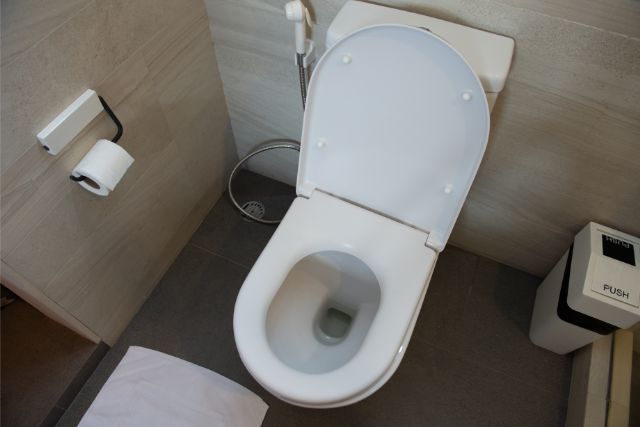
Note: You can also read how to fix will bad wax ring cause the toilet not to flush.
1. Toilet Flange Is Too Small
Your toilet flange is not flushing with the floor, higher chances are the flange is not set to the right height. The recommended height for a toilet flange is about ¼ inch above or slightly below the floor surface.

When a toilet flange is set too low than the surface of the tile, the wastage fails to flush and starts leaking between the tile and the subfloor. Unpleasant odors will escape from underneath your toilet as well.
Anyway, if you’re encountering the problem of a too-short flange, the solution is quite straightforward.
How To Raise The Toilet Flange That Is Too Low
There are several ways you can follow to raise your toilet flange to solve the problem. Go through the below effective ones:
Method #1: Use Of Wax Rings
Replacing the wax ring with a thicker or stacked one will be a quick and effective fix for too low toilet flange. A thick wax ring will fit around the toilet flange’s edge and create a watertight seal to the waste opening or floor.
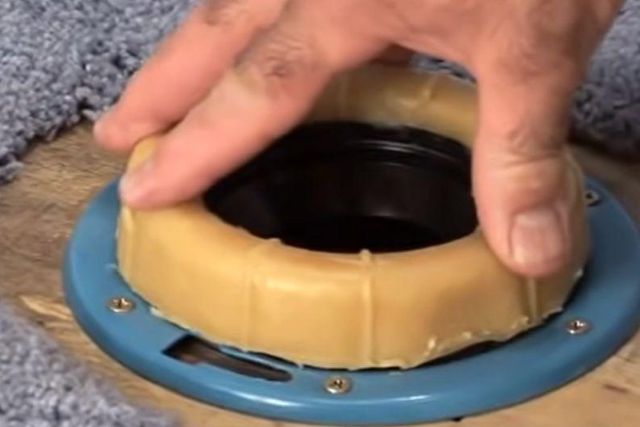
Just scrape the old wax ring with a putty knife and place the new wax ring on top of the flange.
If the gap isn’t too much, using a single, thicker wax ring is enough to solve the issue. But in case, the gap is quite large, you’ll need a double wax ring stacked on top of one other.
Method #2: Toilet Flange Extender/ Spacer
As an alternative to the wax ring, you can install a toilet flange extender as a long-term solution to raise the flange to the correct height. There are various types of extender kits available with different thicknesses. You’ve to know how much you have to extend your toilet flange.
Plus, you can use an extender kit including a rubber gasket to ensure a watertight seal. Most plumbers use silicone caulk around the top edge of the flange to create the seal between the extender and the existing flange.
2. Toilet Flange Is Too High
In most cases, there is a too-high gap between the toilet base and the floor. It’s the most common reason behind your toilet wobbles, leaks, or at times the base isn’t reaching the floor.

Consequently, the flange fails to flush with the floor properly. If really this is the problem, it would lead to severe damage to your floor like warp or break.
What To Do If The Toilet Flange Is Too High
There are three methods that you can apply to fix a too-high toilet flange by yourself. For this instance:
Option #1: Filling The Gap With Grout
Grout is one of the most popular elements that is used to fill the gap when the flange is too high. It is not only inexpensive and easy to apply but will prove enough durable to fix a toilet flange with the floor at the correct height for the long term.
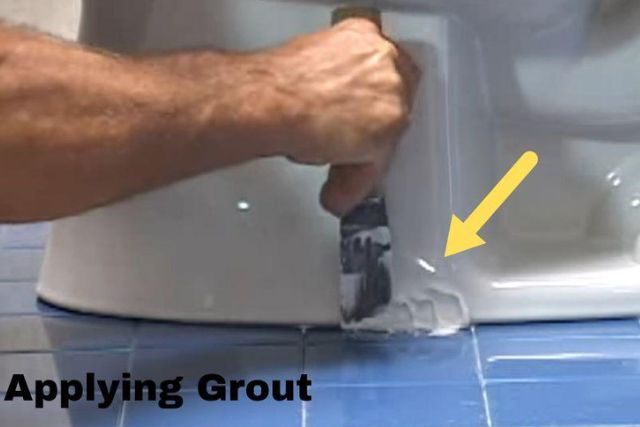
Follow the below simple steps to apply the grout:
- First off, mix the power grout with water and make a thick paste.
- Set the toilet in place and ensure it is straight with the rubber shims.
- Then start applying the grout paste to the gaps around the whole toilet except the shims area.
- Let the grout dry for 24 hours and remove the supportive shims.
- Grout the gap areas and wait for 24 hours again until it gets completely dry.
Option #2: Cut The Drain Pipe
As the second option, you can cut the extra height of the drain pipe so that the flange sits correctly with the floor. Most of the house’s plumbing system is made with PVC pipe, you can easily cut that pipe with a sharp blade.
You have to remove the flange first. Then measure the flange height amount above the surface of the floor. Cut the extra portion of the pipe and ensure the flange is sitting at the correct height.
Anyway, if you’re uncomfortable doing the task, it’s best to call in a plumber.
Option #3: Raising The Bathroom Floor
Aside from the other options above, you may raise your bathroom floor to make the toilet base level. Either you may add a layer of subfloor of the correct thickness or you have to change the floor around the toilet.

Though both of the tasks are time-consuming projects, they will be the permanent solution to keep the toilet at the level. Still, we’ll suggest considering the other options first.
You have to buy a thicker type of flooring or tile, depending on how much you want to raise the toilet base. Visit your local flooring or home improvement store to buy the tile and complete the project with the assistance of a plumber.
3. Cracked Or Broken Flange
The flange is not flushing or not sitting at the even of the floor, it is more likely that the toilet flange is cracked or broken. The flange is an essential part of the toilet plumbing system that sits underneath the base of the toilet.
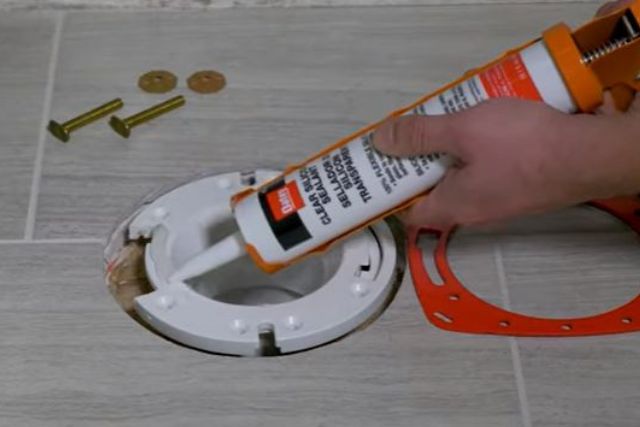
It mainly secures the toilet to the drain pipe, ensuring perfect flushing away the waste. But in case the flange is broken or deteriorated, it will cause several different issues with your house’s plumbing. Only replacing the old flange will be the only solution here if the repair goes beyond.
Symptoms Of A Faulty Toilet Flange
First, let’s light some common signs of a broken toilet flange that needs replacement:
i). The Toilet Rocks Back And Forth
If the toilet flange is not operating properly, the toilet will rock back and forth. Since connecting the toilet to the floor is the core function of the flange, the toilet will move when the flange is broken or cracked.
Here either the bolt rail of the flange has broken or is loose causing the toilet to move.
ii). Sewer Odors Is Coming
If the toilet flange breaks or cracks, the toilet base will not be secured properly in place, leading to sewer gases escaping. You will find unpleasant odors from outside the toilet around the bottom edge.
iii). Leaking From The Base Of The Toilet
Leakage at the base of the toilet is the most common sign of a faulty toilet flange. Due to a broken toilet flange, the wax seal gets loose which causes water to back up from the toilet basement.
What’s The Best Way To Install A Toilet Flange
Well! Once you’ve confirmed that a faulty flange of your toilet, it is time to replace the bad one. But you must need to know the proper way to install a toilet flange. Have a look through the below step-by-step guide to replacing a toilet flange:
Step 1: Start By Removing The Toilet
First off, turn off the water supply from the main shut-off valve and flush the toilet. You have to disconnect your toilet from the flange and remove it.

Here you may need to break or cut the outer flange with a hammer and a chisel. But avoid making a crack in the pipe or variable speed drill.
Step 2: Scrape Off The Old Wax Ring & Inspect The Flange
In the next step, you’ve to remove the old wax ring to inspect the old flange. Just scrape it off with a putty knife and ensure all the wax is off.
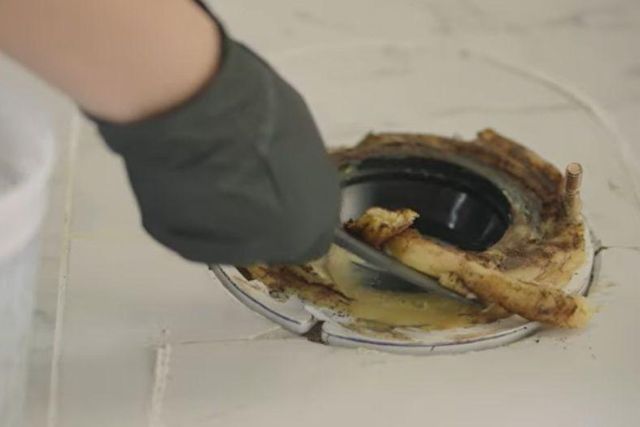
Step 3: Remove The Old Flange
Now you have to remove the old flange. To do so, unscrew the bolts that are holding the flange. But if the bolts are stuck, use a grinder to get them out. Once done, you can easily pull the flange out.
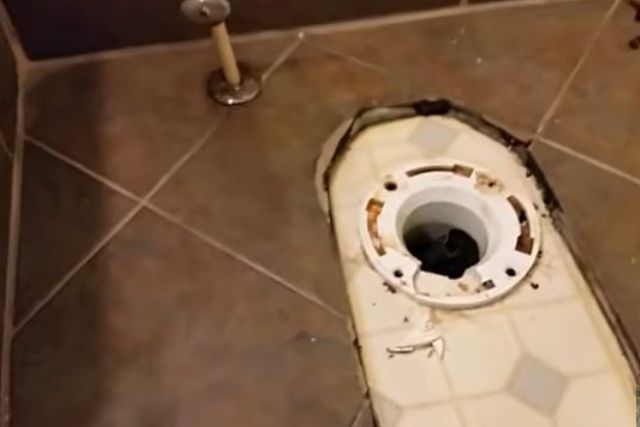
Then shorten the top of the pipe by grinding it flush with the floor. You can use a PVC saw to do this.
Step 4: Insert The New Flange
Now that the flange is out, it is time to set the new flange. But first, make sure you are using the correct size flange for your toilet. Insert your new flange into the pipe and align it with the drain to line up the bolt holes.
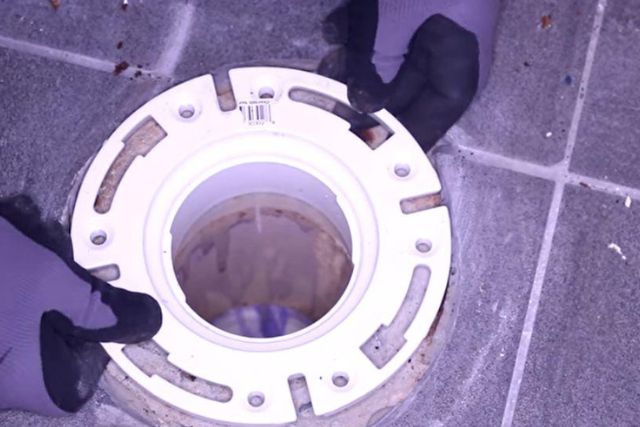
Then Drill holes into the floor and feed the bolts and nuts into the new flange with a screwdriver.
Finally, place the wax ring on top and set the toilet back on to the new flange. Tighten the included bolts and connect the water supply line.
After installing the new flange, ensure there is a water-tight seal between the flange and the toilet. A loose toilet flange will cause the flashing problem again.
3 Essential Tips To Follow When Installing A Toilet Flange
Here we are providing a few pro tips that you may follow while installing a toilet flange:
- The quite effective tip to install the toilet flange is on the top of the finished floor. While installing the flange even or below the floor, you may not guarantee the correct height, leading to the forming of a leak path. So better to install a PVC spacer under the flange during installation. It will ensure the bottom of the flange is flushed with the floor.
- While installing the flange, cover up the bolt slot with painter’s tape. It will protect the slots from entering the mortar. Or, it will be far better if you are using rust-proof screws in order to prevent them from quick deterioration.
- Also, most plumbers use a closed flange that comes with a knockout plug or mechanical test plug. The knockout plug has a tendency to easily break out, which eliminates the possibility of falling down the DWV line while testing the system. The test plug will snugly fit inside the flange where the attached gasket will ensure an airtight/watertight seal.
FAQs:
How Is A Toilet Connected To The Floor?
The toilet mainly secures with the tip of the toilet flange. It is also known as a closed flange that connects the toilet horn with the drain line. Between the connections, the wax ring provides a watertight seal to the floor.
Can I Repair A Broken Toilet Flange?
Yes! Definitely! There are various well effective flange repair kits available in the market which you can use to repair cracked or worn-out toilet flanges. The repairing process with those kits is easy. You just need to re-install the repair ring above the broken flange.
Should The Floating Floor Go Under The Toilet Flange?
While installing the new toilet or renovating the floor, the floating floor should be set at least one-half inch or 12 mm under the toilet. That is because the floating floor above the sub-floor has the chance to expand with the temperature of the room.
In Closing!
As mentioned above, the best thing will be if the bottom of the flange is up to ¼” on top of the finished floor. But if it flushes with the floor surface or slightly below the surface, that’s also not a big issue.
The problem starts when the flange is too high or too low. That’s the point we have to take immediate action. We have already mentioned above all the solving procedures regarding the fact.
Well! That’s all from us here for you! Hope that there should be no queries left over on why the toilet flange not flush with floor. Still, if you are encountering a single trouble while installing or replacing your toilet flange, find yourself with us.
Just leave a comment explaining your problem and get the best solution from our experts!



About James
James founded HomeUpgradeLab & was sharing his experiences to fix issues related to bathroom and toilet fixtures & fittings. Read to know more about James Hill & how he started this blog.